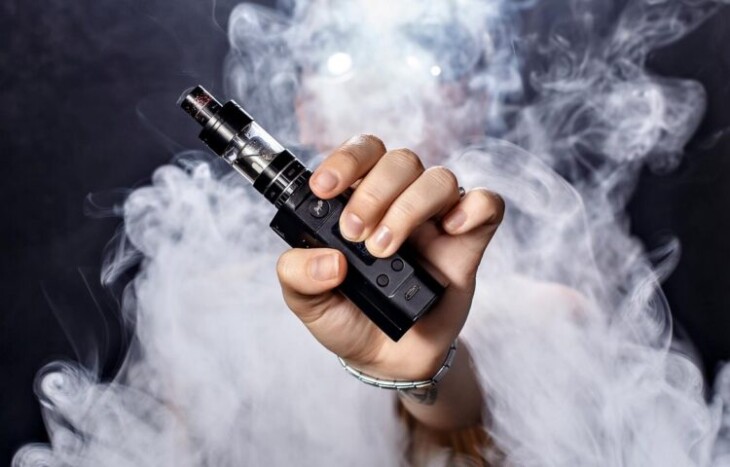Over the past decade, the use of electronic smoking devices has gained significant popularity, revolutionizing the way people consume nicotine and flavored vapor. E-cigarettes and e-shisha, in particular, have become increasingly prevalent in the market. While they share some similarities, there are notable differences between these two electronic alternatives to traditional smoking. In this blog post, we aim to shed light on the contrast between e-cigarettes and e-shisha, exploring their components, health implications, regulatory landscape, social perceptions, and more.
Contents
- What are E-Cigarettes and E-Shisha? A Comparative Overview
- Components and Operation: Understanding the Mechanics
- Nicotine Content and Delivery: Differences in Effects and Consumption Patterns
- Health Implications: Evaluating the Risks and Benefits
- Regulatory Landscape: The Legal Framework Surrounding E-Cigarettes and E-Shisha
- Social Perceptions and Use: Examining the Popularity and Cultural Factors of Electronic Smoking
- Secondhand Exposure: Contrasting the Environmental Impact
- Long-Term Effects: Investigating the Potential Health Consequences of Prolonged Use
- Making Informed Choices: Recommendations and Considerations for Users and Policy-Makers
- Emerging Trends and Innovations: Exploring the Future of Electronic Smoking Devices
- Conclusion
What are E-Cigarettes and E-Shisha? A Comparative Overview
To understand the contrast, let’s start with an overview of e-cigarettes and e-shisha. E-cigarettes, also known as electronic cigarettes or vapes, are battery-operated devices that heat a liquid containing nicotine, flavorings, and other chemicals, turning it into an inhalable aerosol. E-shisha, on the other hand, is a similar device that uses a liquid or gel, often flavored, without the presence of nicotine, and can be found in Crystal Bar. Both devices simulate the act of smoking by producing a vapor that is inhaled by the user.

Source: e-shisha.com.au
Components and Operation: Understanding the Mechanics
The components and operation of e-cigarettes and e-shisha are somewhat similar. Both devices consist of a battery, a heating element, and a reservoir that holds the liquid or gel. However, the main difference lies in the type of liquid used. E-cigarettes typically contain e-liquids with varying levels of nicotine, while e-shisha uses nicotine-free liquids or gels. The heating element in both devices is activated when the user inhales, converting the liquid or gel into vapor.
Nicotine Content and Delivery: Differences in Effects and Consumption Patterns
Nicotine, a highly addictive substance found in tobacco, is one of the key distinctions between e-cigarettes and e-shisha. E-cigarettes deliver nicotine to the user through the aerosol they inhale, providing a similar sensation to smoking traditional cigarettes. In contrast, e-shisha offers a nicotine-free experience, focusing solely on the inhalation of flavored vapor. This difference in nicotine content and delivery affects users’ consumption patterns and the potential for addiction.
Health Implications: Evaluating the Risks and Benefits
The health implications of e-cigarettes and e-shisha have been a subject of intense debate. While both devices are often marketed as less harmful alternatives to traditional smoking, their long-term effects are not yet fully understood. E-cigarettes, with their nicotine content, carry the risk of addiction and potential cardiovascular and respiratory health issues. E-shisha, although nicotine-free, may still pose risks due to the chemicals present in the flavored liquids or gels. Further research is needed to determine the exact health consequences of prolonged use.

Source: unsplash.com
Regulatory Landscape: The Legal Framework Surrounding E-Cigarettes and E-Shisha
Governments worldwide have responded to the rise of electronic smoking devices by implementing regulations to protect public health. The regulatory landscape surrounding e-cigarettes and e-shisha varies from country to country. Some nations have banned or restricted the sale and use of these devices, while others have established age restrictions, advertising regulations, and quality control measures. Understanding the regulatory framework is essential for users and policymakers to make informed decisions.
Social Perceptions and Use: Examining the Popularity and Cultural Factors of Electronic Smoking
The social perceptions of e-cigarettes and e-shisha play a significant role in their acceptance and use. These devices have become popular among certain demographics, including young adults and those seeking to quit traditional smoking. However, they have also faced criticism and concern from health professionals and policymakers. Cultural factors, such as the portrayal of electronic smoking devices in media and popular culture, influence their acceptance and use within society.
Secondhand Exposure: Contrasting the Environmental Impact
Secondhand exposure to the vapor produced by e-cigarettes and e-shisha is another aspect to consider. While both devices generate aerosol or vapor, studies suggest that e-cigarette vapor contains potentially harmful chemicals. E-shisha vapor, on the other hand, is generally considered to be less harmful, as it lacks nicotine and contains fewer chemicals. Nevertheless, precautions should be taken to minimize secondhand exposure in public places, similar to traditional smoking regulations.

Source: en.wikipedia.org
Long-Term Effects: Investigating the Potential Health Consequences of Prolonged Use
As electronic smoking devices are relatively new, the long-term effects of their use are still being studied. Research indicates that e-cigarette use may have adverse effects on lung health, cardiovascular function, and oral health. The absence of nicotine in e-shisha does not guarantee complete safety, as the chemicals in the flavored liquids or gels could still pose risks. Continued research and monitoring are essential to fully understand the potential health consequences of prolonged use.
Making Informed Choices: Recommendations and Considerations for Users and Policy-Makers
In light of the current knowledge surrounding e-cigarettes and e-shisha, it is crucial for users and policymakers to make informed choices. If you are a smoker looking to quit, consulting healthcare professionals and exploring evidence-based smoking cessation methods is advisable. For policymakers, a balanced approach is necessary, considering both the potential benefits and risks of electronic smoking devices. Regulations should focus on protecting public health while providing harm-reduction options for smokers.
Emerging Trends and Innovations: Exploring the Future of Electronic Smoking Devices
The landscape of electronic smoking devices is continually evolving, with new trends and innovations shaping the future of this industry. Manufacturers and researchers are constantly exploring ways to enhance the user experience, improve safety, and address health concerns. One significant trend is the development of pod-based systems that offer convenience and simplicity for users. These devices use pre-filled pods, eliminating the need for refilling and providing consistent flavor and nicotine delivery.
Additionally, advancements in technology have led to the emergence of smart devices with features like temperature control and customizable settings. Furthermore, there is a growing interest in the use of heat-not-burn devices as a potential alternative to traditional smoking. As the industry progresses, these innovations hold promise for creating safer and more enjoyable electronic smoking experiences.

Source: unsplash.com
Conclusion
In conclusion, it is important to understand the differences between e-cigarettes and e-shisha in order to make an informed decision when choosing which devices are suitable for you. E-cigarettes offer a convenient alternative to smoking traditional tobacco cigarettes, while e-shisha provides a more social way of enjoying flavored vapor without the potential health risks associated with cigarette smoke. With this knowledge, we can now confidently enjoy either or both as part of our nicotine intake experience.
